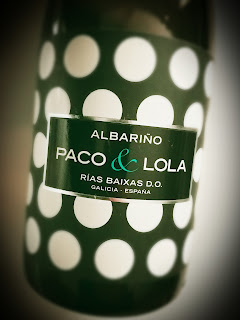Vermouth is an aromatic, fortified wine which is flavored with such things as herbs, roots, flowers, bark or practically anything that grows. It originated in the 18th century as a medicinal aid. Over the years, vermouth dropped from the pharmacy to the bar, where it became an aperitif and now resides as a necessary component of cocktails like martinis, Manhattans and negronis.
White vermouth - dry - is sometimes called French, while the red, sweet kind is called Italian. Those two countries produce most of the vermouth that you'll find on the shelf, although it's also made in Spain as we will see.
The Jerez firm of Gonzalez Byass produces a pair of fine and surprising vermouths, dry white and sweet red. The winery claims the century-old recipes are kept under lock and key.
La Copa Vermouth Extra Seco - the white - is made from 100% Palomino grapes - Fino sherry, actually - which was aged an average of three years in American oak casks in the traditional Solera system. In addition to the grapes, La Copa Extra Seco includes wormwood, clove, cinnamon and the herb called savory. Red fruits were added for a "balsamic aftertaste." Alcohol in the extra dry vermouth tips in at 17% abv and it retails for $25.
This is completely different from every other white Vermouth I've tried. It is aromatic and flavorful to a fault. I smelled smoke, I smelled burnt caramel, I smelled thyme, cinnamon, clove, jasmine. I tasted a burnt caramel or maple sap note. It was actually one of the more expressive and interesting wines in my experience. It sure as hell livened up a martini. Don't spend extra on the gin - let La Copa white vermouth do the work.
La Copa Vermouth Rojo is made from 75% Palomino grapes and 25% Pedro Ximénez variety. It's produced from Oloroso and Pedro Ximénez soleras, more than eight years old. As in the Extra Seco, wormwood, savory, clove, and cinnamon are in the mix, along with orange peel and nutmeg in the sweeter blend. Alcohol sits at 15.5% abv and it retails for $25.
The red vermouth smells of burnt raisins and tangerine. The palate is sweet with a savory sword cutting down the middle. The fact that it’s made from sherry is inescapable.
I used these vermouths in cocktails made with Beefeater London Dry Gin, which contains botanical elements like juniper, coriander, orange peel, lemon peel, angelica root and seed, licorice, almond, and orris root. In a three-to-one gin blend, the white overpowered the gin. I used the red in a one-to-one blend, which let the gin speak for itself but still allowed the sweet vermouth to contribute amply. Both are also fine to sip all on their own.
Follow Randy Fuller on Twitter



















